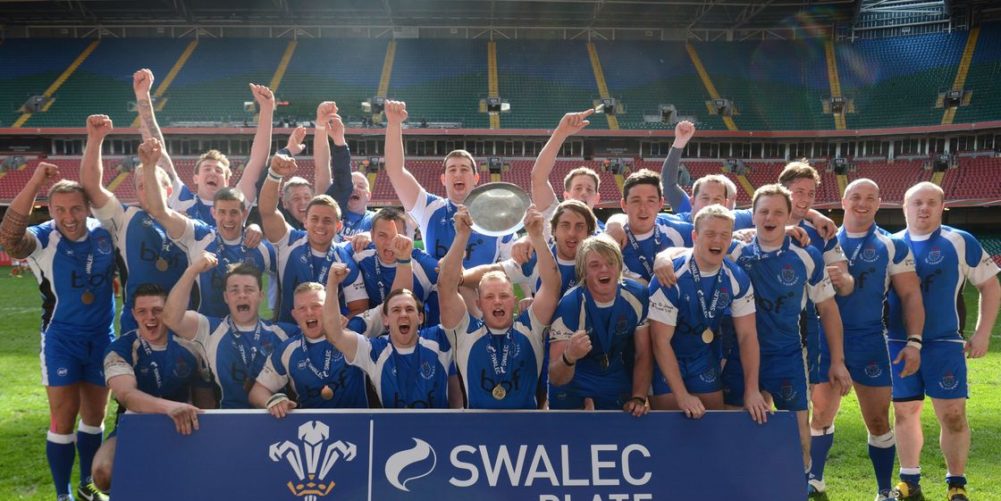By Peter Ryan – @PeterRyan Sports
From cities to the valleys, rugby is a way of life; it is the heartbeat of many Welsh people. The club game is the foundation of it all.
This sentiment will resonate with many grassroots clubs around Wales.
One of these clubs is Heol-y-Cyw, which has a tremendous Welsh rugby legacy.
You will find the team in Bridgend County, an area with numerous quality teams.
As the game in Wales is at an all-time low, it is high time the Welsh public fell back in love with its foundation and returned to its roots.
Heol-y-Cyw has a formidable history, so let us gain insight into this incredible village and club.
A Historic Place
Located in Bridgend County, you will find the rural village of Heol-y-Cyw. The name originates from the village’s agricultural roots, as Heol-y-Cyw translates to “Road of the Chicken.”
Farming is deeply ingrained in the village’s history, yet the industrial revolution is where Heol-y-Cyw hit its stride.
The transformation of the coal industry helped many villages like Heol-y-Cyw. Even though it was not a direct mining hub, many people in the town worked deep in the pits.
The values often associated with miners, such as being hard-working, durable, and resilient, are also found here.
Heol-y-Cyw is a tight-knit community, which is especially important to the Bridgend area. You can see this reflected in the rugby club itself.
The Club
Heol-y-Cyw was founded in 1906 and has a fascinating history in Welsh rugby.
For a long time, the base of operations was the Heol-y-Cyw Working Men’s Club. However, the club went through a meteoric rise after the Second World War, and in 1978, a new clubhouse was built on the High Street.
Such a milestone in the club’s history was marked by “The King” Barry John opening the establishment in July of that year.
Heol-y-Cyw provided a place for local players to play and socialise, and the clubhouse quickly became a social hub for the community, like many teams in the area.
The mark of a great side is making the most of what you have.
Heol-y-Cyw quickly built a reputation for punching well above its weight. It resembles the village’s outlook on life; as a small community of 540 people, Heol-y-Cyw often exceeds expectations.
The people have an intense spirit where nothing is too big to overcome.
Throughout its history, the club has managed to pull off some tremendous results for a relatively small team.
A prime example is the 1983 Brewers Cup, where the team stormed to Cardiff Arms Park in a giant-killing run.
The Brewers Cup allowed less high-profile clubs like Heol-y-Cyw to take on the big dogs of Welsh rugby at the time.
Baglan was victorious in the final, but getting that far was monumental.
More Cup Success
This was not Heol-y-Cyw’s only success in cup competitions; in the Lyn Cup, they toppled the mighty Maesteg Harlequins to capture the gold.
On a December night in the 1984 second round of the Schweppes Cup, Heol-y-Cyw travelled to the legendary Gnoll to take on the formidable Neath.
Known as the ‘Welsh All Blacks,’ Neath was where many seasoned internationals played rugby.
Even though the side went into the contest as underdogs, they were underrated and embodied the spirit of the town to give their opposition a real run for their money.
A monumental moment for any club is gaining WRU status; Heol-y-Cyw achieved this for the 1988/89 season and has been a fixture in grassroots rugby ever since.
Fast forward to 2013, and Heol-y-Cyw took a trip to the Principality Stadium with their eyes firmly set on Rhydyfelin, bringing the Swalec Plate back to the village.
They secured a 20-19 victory over their opposition, reinforcing their reputation for punching well above their weight.
Links to a Welsh Legend
An abundance of quality rugby talent has come out of Wales, especially in the 1990s. One of those players is Allan Bateman, who has links to Heol-y-Cyw.
Known for his speed and formidable defence, Bateman quickly built a reputation as a force to be reckoned with in the local game.
He earned the fitting nickname “The Clamp” because his opposition always had a quiet day playing against him.
Of course, the centre built an excellent name for himself, spreading his reputation nationwide.
Bateman had stints with clubs like Llanelli and Neath and, later in his career, with Northampton Saints.
However, he also conquered the world of rugby union and rugby league.
Bateman is not the only player to have succeeded in both codes, joining the likes of Jonathan Davies, Scott Gibbs, and David Watkins.
It takes a tremendous athlete to excel in both sports, and Bateman was undoubtedly one of them.
Throughout his rugby league career, he played for teams like Warrington Wolves, Bridgend Blue Bulls, and Leeds Rhinos.
Along with his 35 Welsh rugby union caps, Bateman earned 13 caps for the Great Britain rugby league team. Bateman was also a member of the 1997 British & Irish Lions tour to South Africa, one of the most significant achievements in rugby union. Looking back at his career, Bateman did it all, and after his professional career was over, he took his talents to Heol-y-Cyw to help the grassroots club.
The Present
Heol-y-Cyw is in an auspicious position. They currently play in Division 2 West Central, where, in the initial stages of the season, the side has gone three for three.
This year, there is a lot of excitement, with promotion hopes echoing around the club. A big reason for this is the players the club has signed.
The first of these signings is Paul Short, who arrives with a wealth of experience, including stints at Bridgend Ravens and Glamorgan Wanderers.
Arron Pinches is the second key signing for Heol-y-Cyw. He will bolster their backline and bring all his experience from the Premiership, where he played for Merthyr and Cardiff.
These two additions to the backline make Heol-y-Cyw’s attack an exciting prospect. They have all the tools needed to challenge for the title and the experience to execute it.
Promotion could be within reach this year if the first three games are anything to go by. A quote by team captain Jordan Hawkins says it all about the attitude of the team:
“There is only one way to succeed at anything, and that is to give everything.”
Looking Ahead
To grow, a rugby club must ensure a constant carousel of young talent. Heol-y-Cyw launched its junior programmes in 2020 with plans to ensure future players for the club.
The club has a strong sense of community and plans to expand it further. The discussions with Bridgend Council about a community asset transfer, which would be a 35-year lease of the playing fields, illustrate this perfectly.
If granted, the club will gain more control over the pitches they play on, allowing them to further their relationship with the community.
Heol-y-Cyw is a great club, and they are a persevering team that has achieved tremendous things despite its small size. Thinking about what is next for the team on and off the field is exciting.
READ MORE: Mastering the engine room – The crucial role of second row combinations























